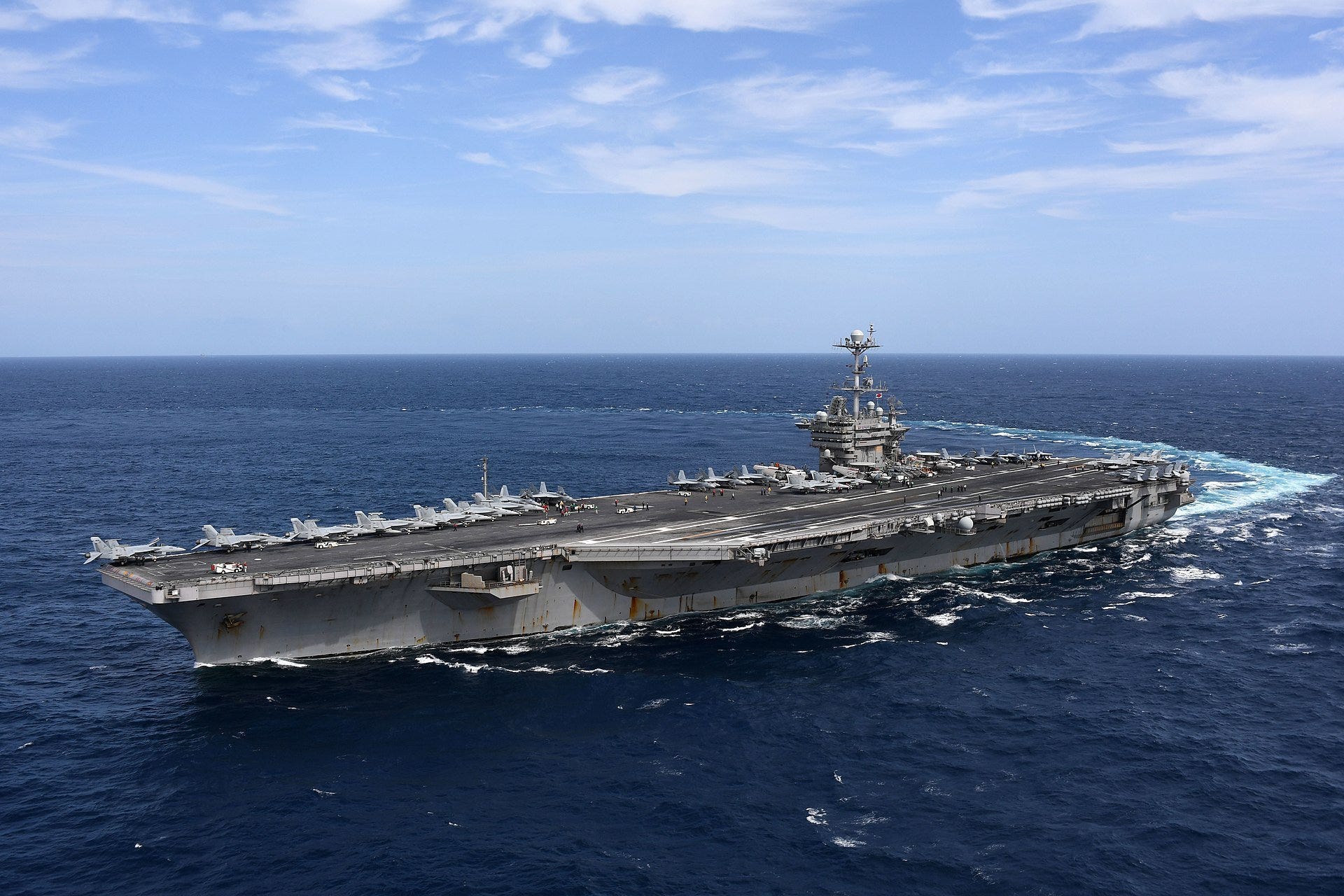(photo: The erstwhile USS Harry S. Truman (CVN-75), now dubbed the USS Trembling Puppy for its multiple episodes of fleeing Yemeni missile strikes in a panic.)
In the aftermath of the USS Trembling Puppy acknowledging the loss of yet another fighter aircraft in the midst of a Yemeni missile attack, many speculations have arisen regarding what actually happened.
The “official” story is that an F/A-18 and its tow tractor were flung overboard while performing “evasive maneuvers” in the face of oncoming Yemeni anti-ship cruise missiles.
Many are skeptical of the “official” story of the jet going overboard as a result of an evasive maneuver.
Some think a US carrier would not even attempt an “evasive maneuver” to elude a cruise missile. But US carriers are trained on such maneuvers, even though I suspect they have limited potential efficacy.
Some think the Yemeni may have used loitering drones to shoot down an F/A-18 on landing approach to the carrier. This is an interesting conjecture, and while I do not dismiss it outright, I consider it less likely than the “official story”.
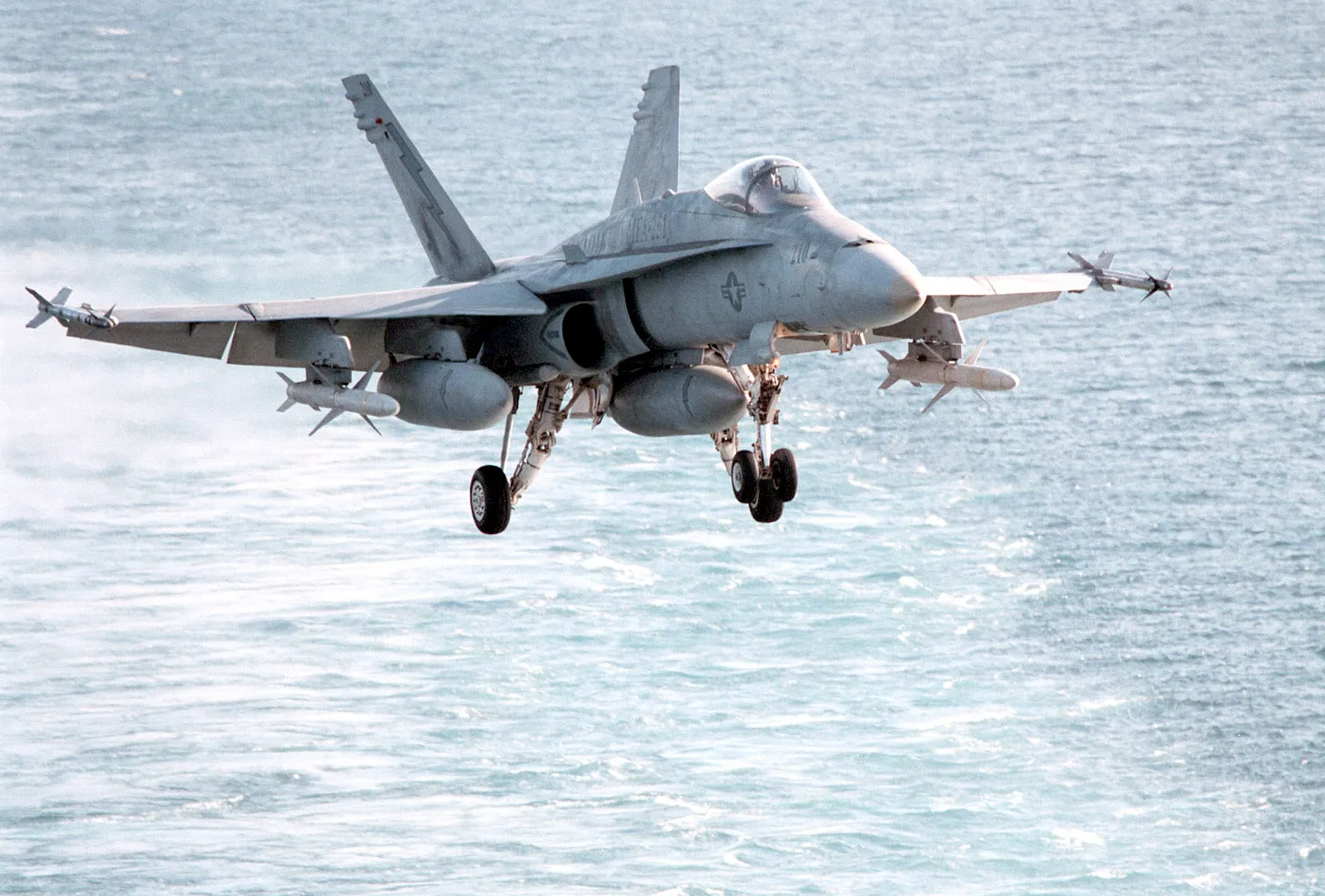
F/A-18 on approach for a carrier landing.
Let’s first consider the anti-ship cruise missiles, which are either Iranian “hand-me-downs”, or at least based on legacy Iranian designs, with a range up to 2000 km, a speed of ~.7 Mach, and a ~250 kg warhead.
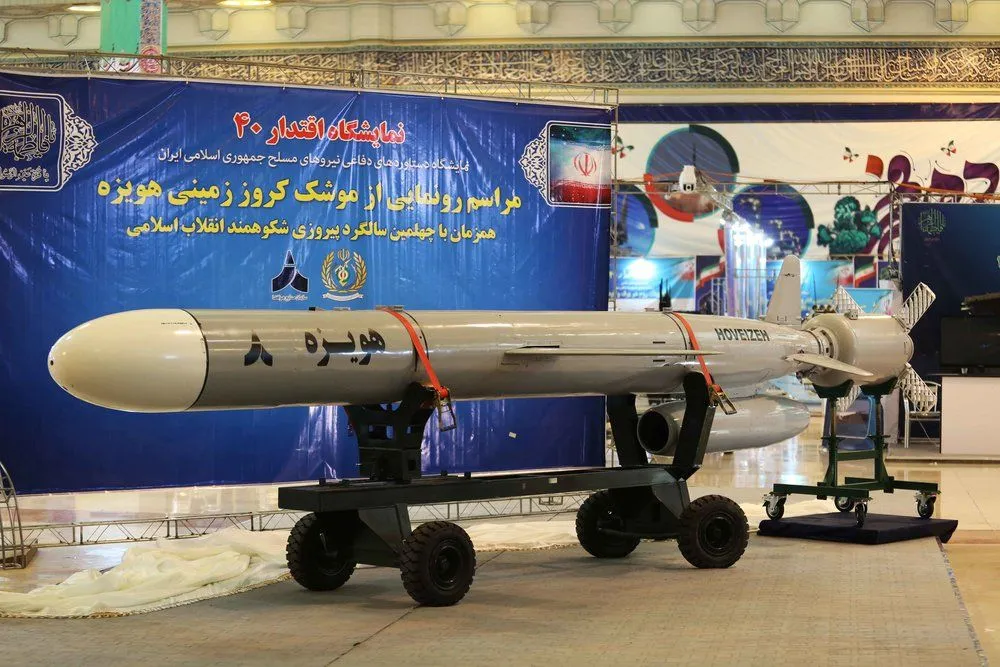
Iranian Soumar ground-launched Cruise Missile, believed to be the design-basis for Yemeni ground-launched cruise missiles.
From a launch point in Yemen, it would require over an hour of flight time to travel the 1000+ km distance to the carrier strike group in the northern Red Sea.
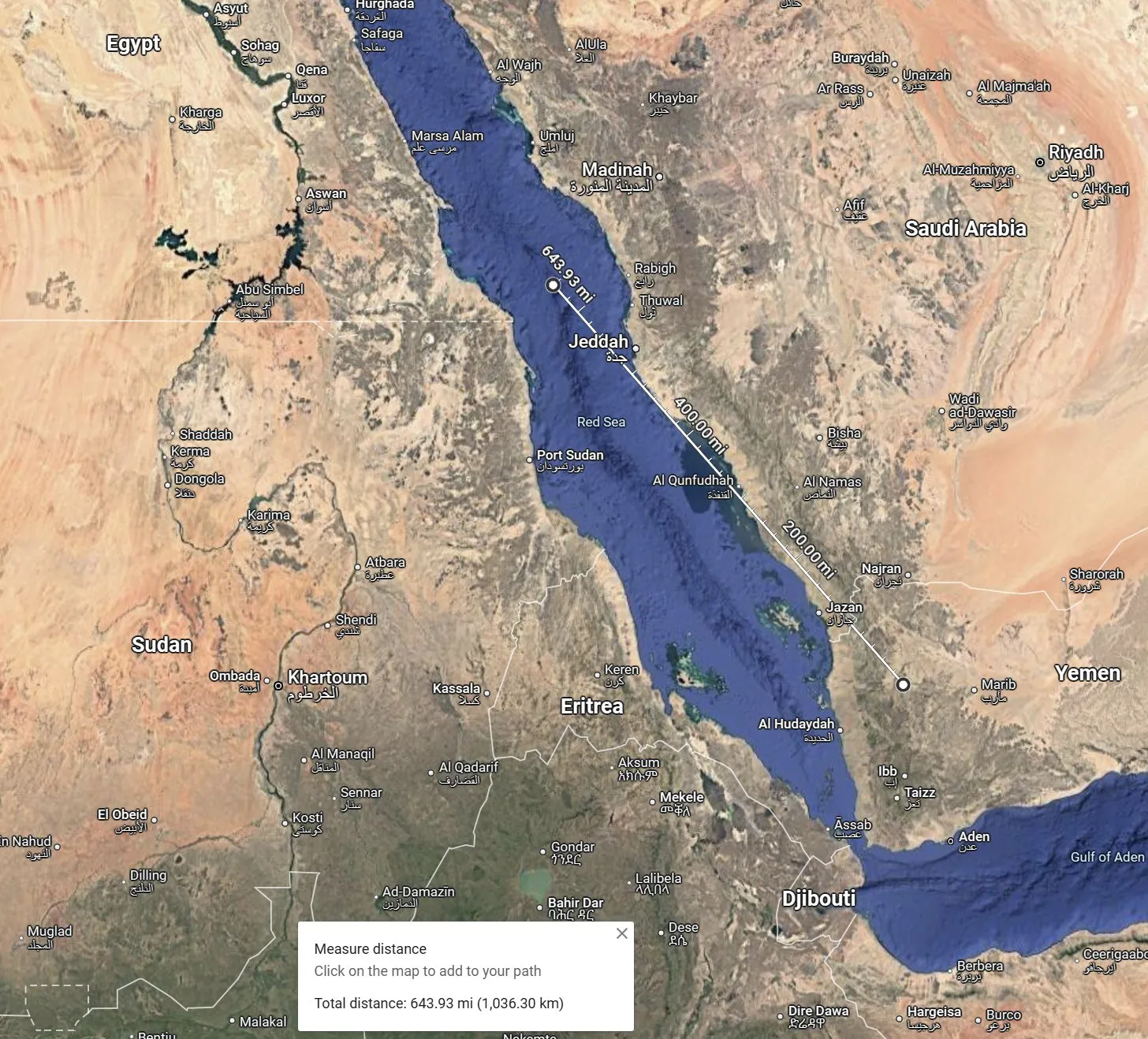
Map of the Battle of the Red Sea — 2025
It must be assumed that US surveillance assets are able to track such missile launches along their entire path, and so CSG-8 should have been continuously apprised of the position of the various components of the strike package.
In other words, Rear Adm. Sean R. Bailey, commander of Carrier Strike Group Eight, and Captain Christopher “Chowdah” Hill, commander of the USS Harry S. Truman (CVN-75), both should have had real-time intelligence at every moment for 4+ hours of drone flight time, and over an hour of cruise missile flight time.
That said, the MQ-9 Reaper drone is one of the integral components of US persistent surveillance capability — and as has been widely reported, the Yemeni have now shot down 22 of them, several in the last month alone. So it is altogether possible that US surveillance of these missile launches could be meaningfully impaired.

Yemeni soldier celebrating the downing of yet another MQ-9 Reaper drone.
At any rate, I figure the Yemeni are firing cruise missiles which, at best, have about a 250m circular error probability at a distance of 1000+ km. Even a salvo of a dozen would struggle to score a hit on a moving ship 1000 km away — and the Yemeni have typically only fired 2 or 3 in any given salvo.
But apparently at least one got through the perimeter air defenses and the combat air patrol on this particular occasion, and was on a threatening track towards the Trembling Puppy.
Therefore Captain Soggy Cookie veered in a panic, dumping an F/A-18 and its tow tractor into the sea, and splashing salty seawater into the still-open wound of the Trembling Puppy’s February 2025 collision with a cargo ship just north of the Suez Canal.
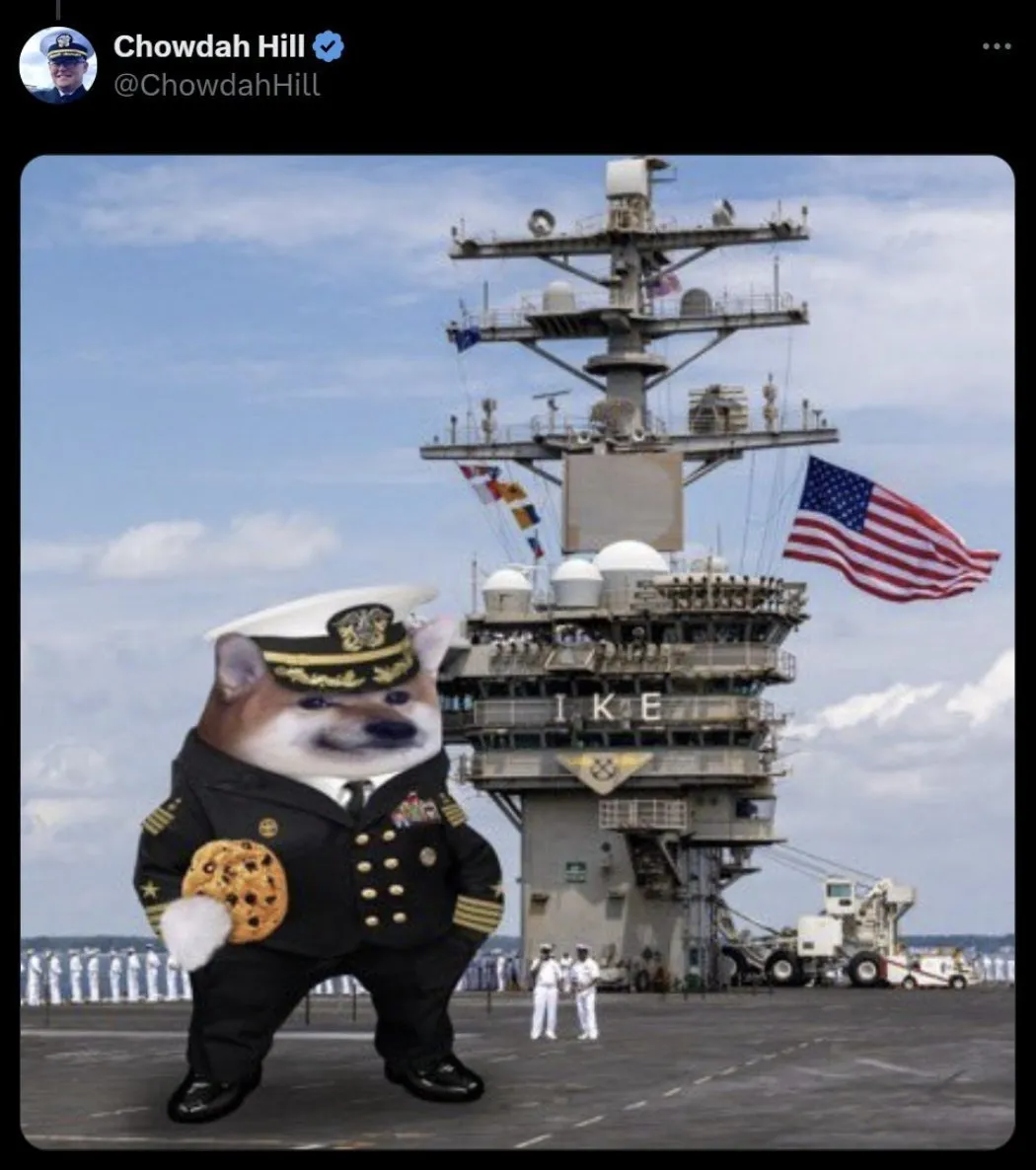
Captain Soggy Cookie, formerly of the USS Brave Sir Robin (CVN-69), now commanding the USS Trembling Puppy (CVN-75).
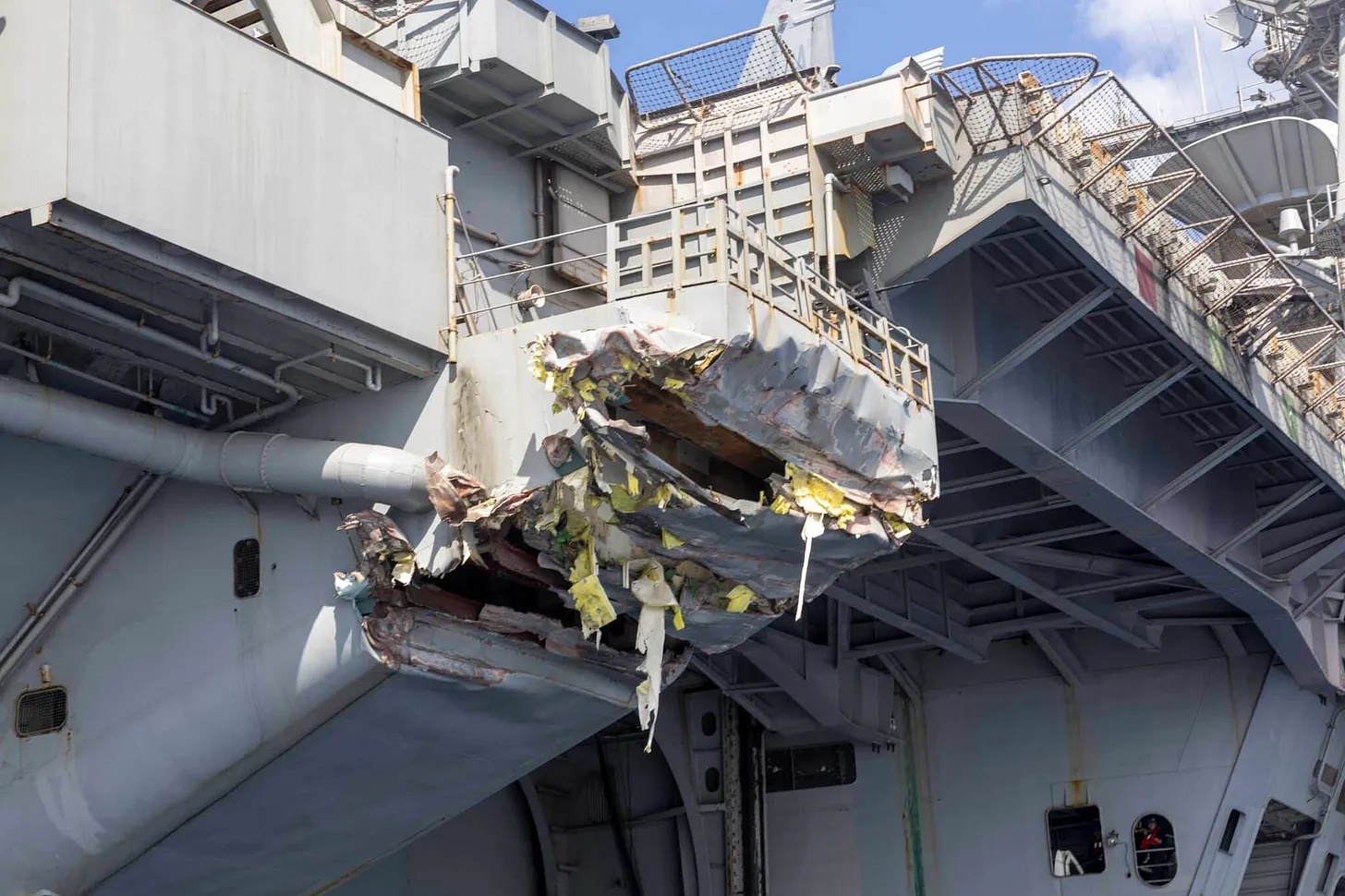
USS Trembling Puppy Collision Hull Damage
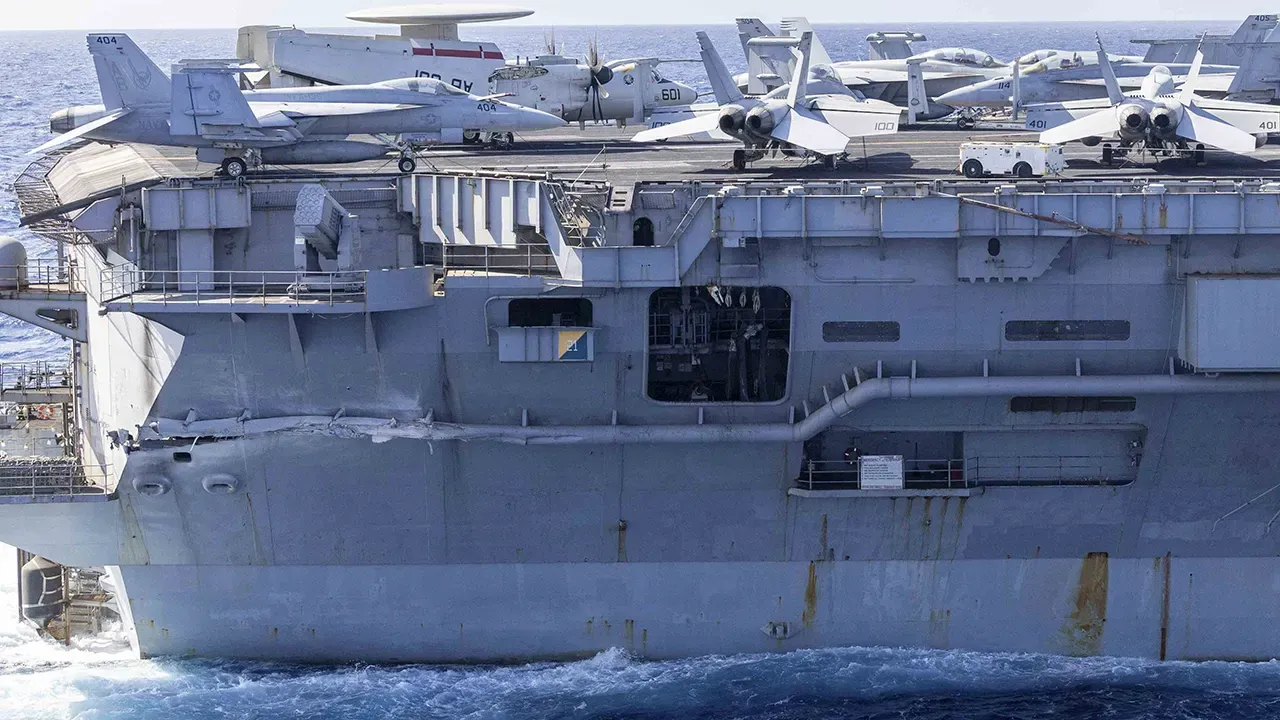
USS Trembling Puppy Collision Hull Damage
Anyway, no matter the as-yet-uncertain details, it’s clearly another indisputable embarrassment for the US Navy, which has sought in vain for a year and a half to break the Yemeni selective blockade of the Red Sea.
With the recent addition of the USS Timid Vinny (CVN-70), which is cowering somewhere in the calm blue waters of the northern Arabian Sea, the Yemeni have now put the fear of Allah into five separate US Navy carrier strike groups over the course of the past eighteen months.
Alas, as I have long observed, there are no easy wars left to fight.
In any case, this simple fact remains: against all odds and prior expectations, the chronically underestimated Yemeni remain the gatekeepers of the Bab-el-Mandeb, and are inflicting upon the United States Navy one of the most decisive strategic defeats in its heavily mythologized history.
Reprinted with permission from imetatronink.
Subscribe and support here.

